What is a forged flatware?
You see "forged" on high-end flatware, but it sounds like something from an ancient blacksmith. You wonder if it’s just a marketing buzzword or a real mark of superior quality.
Forged flatware is crafted from a solid bar of steel that is heated and hammered into shape. This process creates a heavier, stronger, and more balanced piece, distinguishing it from stamped flatware, which is simply cut from a steel sheet.
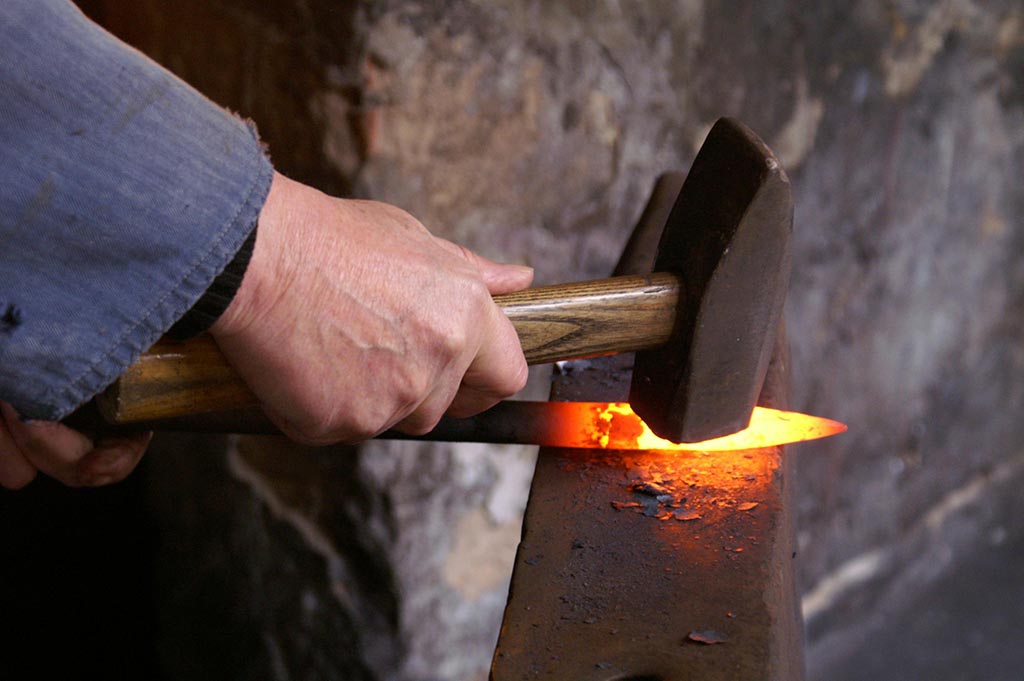
In my line of work, the difference between forged and stamped is a fundamental topic of quality. When I speak with professional buyers like Jacky, who sources for a major US brand, the feel and durability that forging provides are paramount. Forging isn't just for chef's knives anymore; it has become a key indicator of luxury across the entire cutlery set. Understanding this process is the first step to understanding true flatware quality. It’s what separates an everyday utensil from an heirloom-quality piece.
Does forged stainless steel rust?
You've invested in premium forged flatware. Now you worry that the intense heating and hammering of the forging process might have made the steel weaker and more likely to rust.
No. Forging is purely a shaping process and does not cause rust. Rust resistance is determined by the material itself, such as 18/10 stainless steel. Forged stainless steel retains all of the excellent anti-corrosion properties of the original steel.
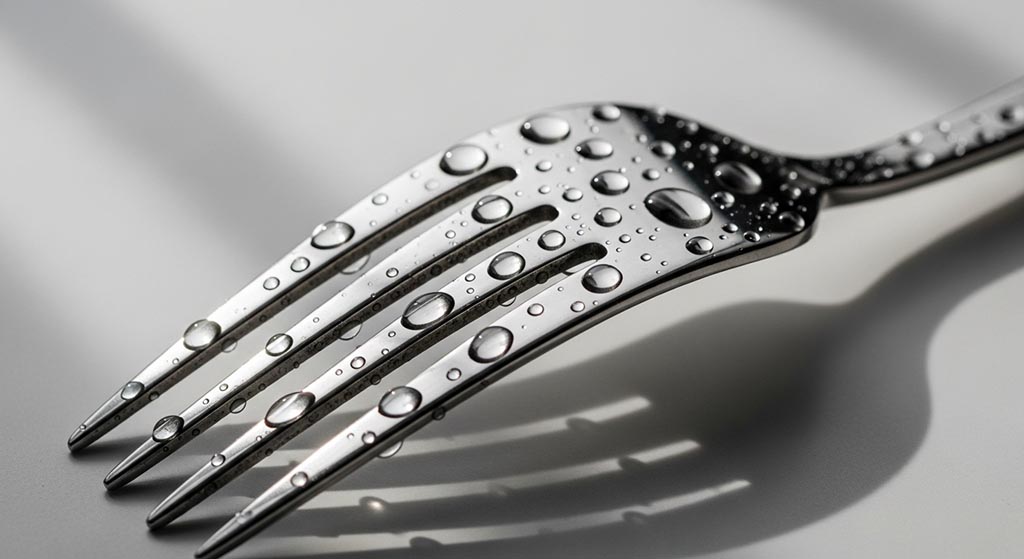
This is a question I get often, and it stems from a simple confusion between the process and the material. The ability of steel to resist rust comes from its chemical makeup, not how it's shaped.
Material Quality is Key
High-quality stainless steel, like the 18/10 grade we use for premium lines, is defined by its alloy content:
- 18% Chromium: This is the most important element for rust prevention. It creates a passive, invisible film on the surface of the steel that protects it from moisture and oxygen.
- 10% Nickel: This adds a secondary layer of defense against corrosion, especially from acids and salts in food. It also gives the steel its brilliant shine and luster.
The forging process—heating the steel and shaping it—does not remove or damage these elements. In fact, by compressing the steel, it creates a denser grain structure. While this primarily enhances strength and balance, it certainly doesn't harm the steel's inherent ability to fight off rust. So, you can be confident that a piece of forged 18/10 stainless steel flatware has the highest level of rust resistance possible.
Which is better, forged or stamped?
You're choosing flatware and see "forged" and "stamped" at very different prices. You wonder which is the better long-term investment and if the forged option is truly worth the extra cost.
For overall quality, a luxurious feel, and lifetime durability, forged flatware is better. For budget-focused, high-volume needs where good quality is sufficient, stamped flatware is the more economical and practical choice.
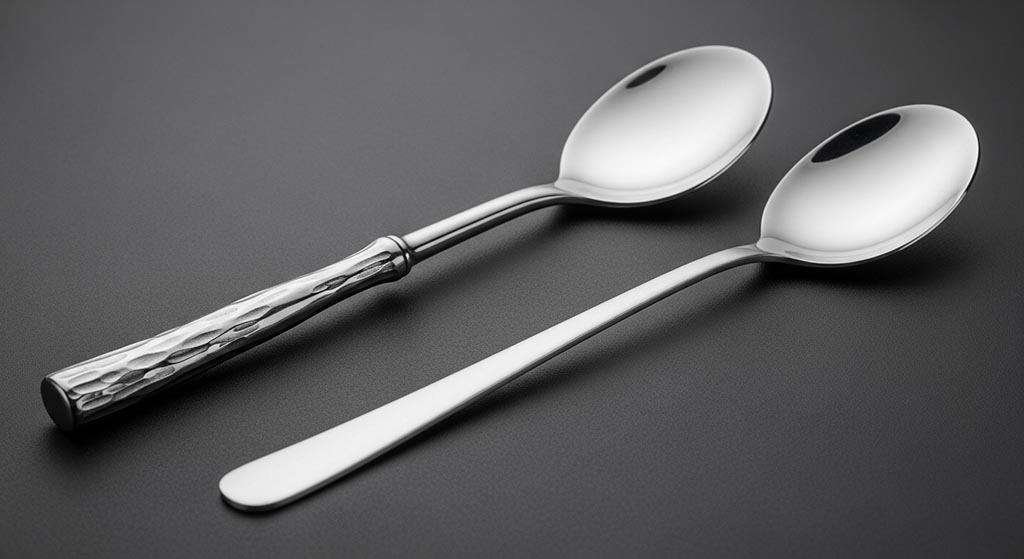
Deciding between forged and stamped comes down to a clear trade-off between premium quality and cost-effectiveness. In my factory, we produce both, and I guide clients based on their specific priorities. For a five-star hotel, it's almost always forged. For a large-scale cafeteria, it's stamped. Here’s a direct comparison:
| Feature | Forged Flatware | Stamped Flatware |
|---|---|---|
| Manufacturing | Heated solid billet hammered into shape | Cut from a cold-rolled sheet of steel |
| Weight & Balance | Heavier, with excellent balance | Lighter, can feel unbalanced |
| Strength | Extremely strong, rigid, and durable | Good strength, but can bend |
| Key Feature | Has a thick bolster for balance | Uniform thickness from end-to-end |
| Cost | Significantly higher | Much lower, very economical |
The superiority of forged flatware lies in the process. Starting with a solid bar of steel allows us to create pieces with variable thickness—thick and heavy in the handle and bolster, and elegant and refined at the tines or spoon bowl. This gives it a satisfying heft and perfect balance that stamped flatware, with its uniform thickness, can never replicate. Stamping is incredibly efficient, but it's a process of cutting, not crafting.
Is forged steel better than stainless steel?
You hear terms like "forged steel" and "stainless steel" used, almost as if they are competing options. This is confusing and makes you wonder if you have to choose one over the other.
This question is based on a common misunderstanding. "Forged" is a manufacturing process, while "stainless steel" is a type of material. The highest quality flatware is forged from stainless steel. They are not competing options; they work together.
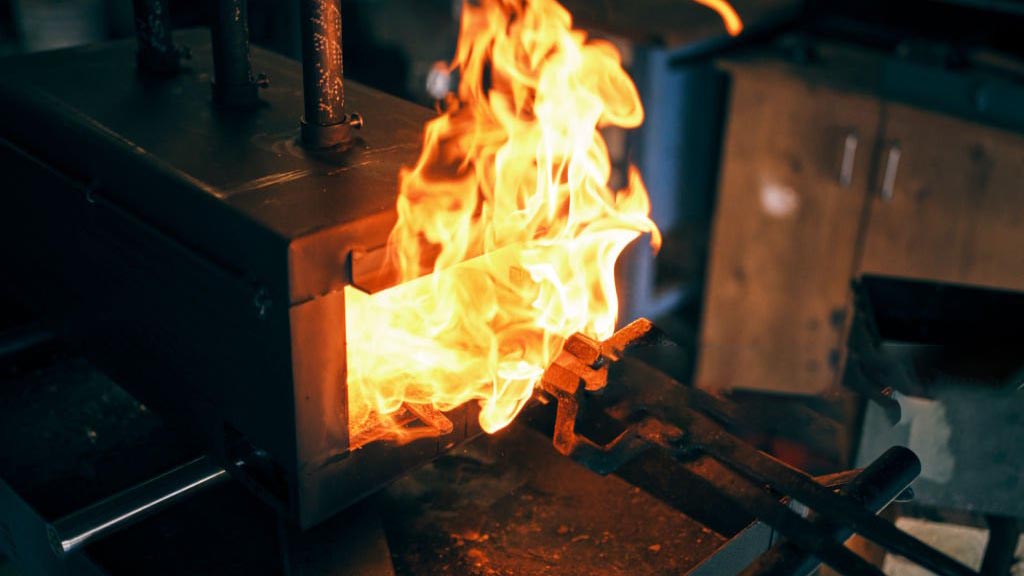
I spend a lot of time clarifying this point for clients. It's one of the most common points of confusion in the industry. Let's break it down with an analogy. Asking if forged steel is better than stainless steel is like asking if a hand-stitched wallet is better than a leather wallet. It doesn't make sense. The best wallets are hand-stitched from high-quality leather.
Process vs. Material: A Simple Explanation
- The Process (How it's made): This is where forging comes in. It's the technique used to shape the metal. The alternative is stamping.
- The Material (What it's made of): This is where stainless steel comes in. It's the raw material chosen for its specific properties: rust resistance, durability, and food safety. You could, in theory, forge other metals like carbon steel or titanium.
In the world of high-quality cutlery, the goal is always to combine the best process with the best material. For premium flatware, that winning combination is using the forging process on a bar of 18/10 stainless steel. This gives you the strength and balance of forging and the rust-proof, beautiful finish of top-grade stainless steel.
How to tell the difference between stamped steel and forged steel?
You're holding two forks that look almost identical at first glance. One is far more expensive than the other, and you can't immediately see the reason. You need to know how to spot true quality.
The easiest way to tell is to look for the bolster—a thicker, solid area where the handle transitions to the tines. Forged pieces have this and feel significantly heavier. Stamped pieces have a uniform thickness and feel much lighter.
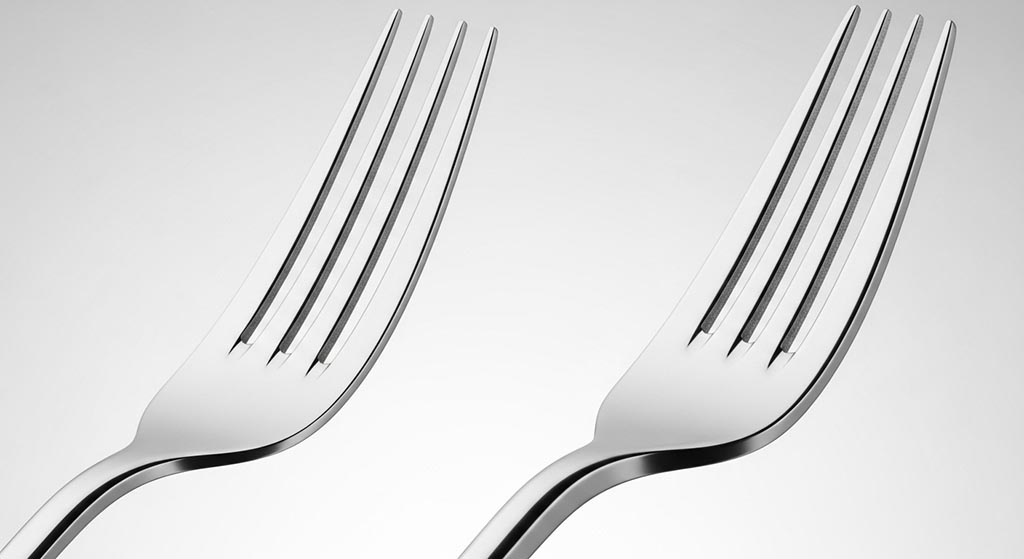
Once you know what to look for, the difference becomes obvious. As a manufacturer, I can spot it from across the room. Here are the simple tests you can use to identify a forged piece.
The Feel and Look Test
- Find the Bolster: This is the most reliable visual cue. On a fork or spoon, it's the thick section between the handle and the head. On a knife, it's the thick metal part between the blade and the handle. This bolster is integral to the piece and adds weight and balance. Stamped flatware is flat and uniform in this area.
- Feel the Weight: Pick it up. A forged piece will have a satisfying, substantial heft. A stamped piece will feel noticeably lighter. The weight is a direct result of the denser metal and the added material in the bolster.
- Check the Balance: Hold the utensil at the point where you normally would. A forged piece feels balanced in your hand, not top-heavy or handle-heavy. This balance is a deliberate part of the design that the forging process makes possible.
- Examine the Profile: Look at the utensil from the side. A stamped piece is a flat cutout. A forged piece has contours, curves, and a varying thickness that is both functional and beautiful.
Conclusion
Forged flatware means superior quality, offering better weight, balance, and strength. It's a manufacturing process, not a material, and the best flatware is forged from high-quality stainless steel.
